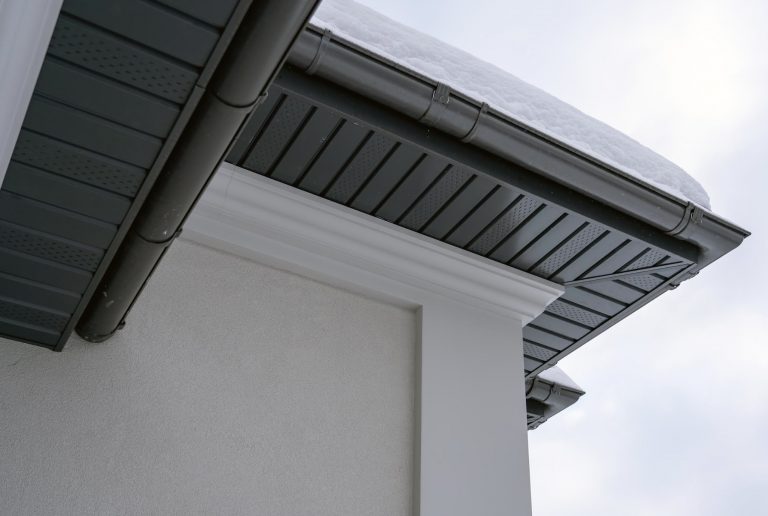The soffit, often overlooked in home exteriors, plays a crucial role in both aesthetics and ventilation. This horizontal surface beneath the eaves helps create a finished look for your home while also promoting proper airflow in your attic. Choosing the right soffit type is essential for maintaining a balance between functionality and visual appeal. In this guide, we’ll explore different types of soffits to help you make an informed decision.
- Vinyl Soffits: Vinyl soffits are a popular choice for their durability, low maintenance, and affordability. They are resistant to moisture, insects, and rot, making them an excellent option for homeowners seeking a long-lasting and cost-effective solution. Vinyl soffits are available in a variety of colors and styles, allowing for customization to match your home’s exterior.
- Aluminum Soffits: Aluminum soffits are known for their lightweight nature, resistance to corrosion, and longevity. They require minimal maintenance and are available in a range of colors and finishes. Aluminum soffits are often chosen for their ability to withstand harsh weather conditions while providing a sleek and modern appearance.
- Wood Soffits: Traditional and timeless, wood soffits add a warm, natural aesthetic to a home’s exterior. While they offer a classic look, wood soffits require more maintenance than other materials. Regular painting or staining is necessary to protect against the elements and prevent decay. Wood soffits are often selected for their ability to complement historic or rustic architectural styles.
- Fiber Cement Soffits: Soffits made from fiber cement combine the benefits of durability and versatility. This material is resistant to rot, insects, and fire, providing a low-maintenance option for homeowners. Fiber cement soffits can be painted to match any color scheme and architectural style, offering flexibility in design.
- Ventilated Soffits: Adequate attic ventilation is crucial for regulating temperature and preventing moisture buildup. Ventilated soffits feature small perforations or openings that allow air to flow into the attic space. These soffits contribute to energy efficiency by promoting air circulation and preventing the formation of mold and mildew.
- Beaded Soffits: Beaded soffits add a touch of elegance with a textured or beaded pattern. This type of soffit is often chosen for its ability to create a distinctive and decorative look, enhancing the overall curb appeal of the home. Beaded soffits are available in various materials, including vinyl and fiber cement.
When selecting a soffit type, consider factors such as your budget, maintenance preferences, architectural style, and climate. A well-chosen soffit not only enhances the appearance of your home but also contributes to its structural integrity and ventilation efficiency. Take the time to explore the options available and choose a soffit that aligns with your specific needs and aesthetic preferences.


0 Comments